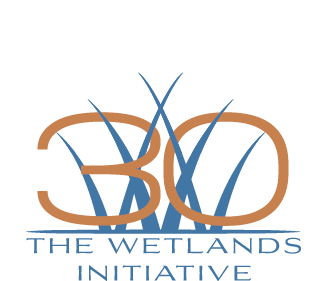In honor of American Wetlands Month, TWI and Openlands have teamed up to spotlight 14 of the best wetlands to visit around the Chicago region this summer using Openlands' Get Outside Map. From quiet marshes to biodiverse sloughs, these sites offer a chance to explore and reconnect with nature.
14 Chicago-area Wetlands to Visit This Summer:
1. Volo Bog State Natural Area: Volo Bog is the only open-water quaking bog in Illinois, formed more than 10,000 years ago by glacial retreat. Visitors can follow a floating boardwalk across wetland vegetation including plants and trees rooted in a spongy, peat-rich floating mat.
2. Lake in the Hills Fen: This nearly 500-acre preserve includes one of the rarest types of wetland habitat in the state: calcareous fen. These wetlands are fed by springs and support unusual plant species that have adapted to mineral-rich groundwater. A network of trails leads through sedge meadows, prairies, and fens.
3. Sue and Wes Dixon Waterfowl Refuge: Spanning 3,000 acres, this restored landscape that was once farmland includes marshes, wet meadows, and an extremely rare seep wetland — one of the highest-quality examples in Illinois. The refuge supports large populations of native and migrating waterfowl and offers a variety of walking trails.
4. Indian Ridge Marsh Park (Park No. 565): Once heavily degraded by industrial activity, this hemi-marsh now serves as an important site for native vegetation, amphibians, and birds. The park features both open water and wet prairie, and visitors can catch a glimpse of herons, ducks, and other wetland birds from the park’s network of winding trails and boardwalks.
5. Harms Flatwoods Nature Preserve: This preserve features seasonally wet flatwoods with sedges, wetland shrubs, and large oak trees. It is considered one of the best remaining examples of flatwoods in the state. An unpaved trail within the preserve connects to the North Branch Trail, which runs along 13 miles of the Chicago River.
6. Drummond Floodplain at Midewin National Tallgrass Prairie: Located in the northwest corner of Midewin National Tallgrass Prairie, this floodplain prairie grows on dolomite bedrock, creating a mix of wet, dry, and mesic conditions that support rare plants and grassland birds.
7. Illinois Beach State Park: Covering 6.5 miles of Lake Michigan shoreline, this park features coastal wetlands, sand dunes, and marshes, plus multiple campgrounds for those looking to visit overnight.
8. Marian R. Byrnes Park: One of Chicago’s largest natural areas at 140 acres, this park on the South Side of the city includes marsh, wet prairie, savanna, and woodland habitats. A paved trail winds through the site, making it ideal for a scenic bike ride, with chances to spot frogs, snakes, birds, and deer.
9. Somme Woods Forest Preserve: This preserve features diverse habitats including ephemeral ponds, open marshes, bur and white oak savannas, and woodlands. A network of foot paths, hiking trails and bridges guide visitors through the site, passing seasonal wetlands and ponds along the way.
10. Cranberry Slough Nature Preserve: One of the oldest protected ecosystems in Illinois and a relic of the glacial era, this preserve features remnants of a peat bog as well as sedge meadows.
11. Deer Grove Forest Preserve: This preserve features a mix of restored wetlands and vernal ponds, which serve as springtime breeding grounds for amphibians such as blue-spotted salamanders.
12. Bobolink Meadow Land & Water Reserve: Situated atop the Des Plaines River watershed, this site includes important hydrology features that help prevent flooding downstream. It is home to over 140 bird species, including one of Illinois’ largest bobolink populations.
13. Hadley Valley Preserve: This large preserve is home to one of the biggest wetland and stream restoration projects in the region. A re-meandered stream and reconnected wetlands support frogs, birds, and native aquatic plants.
14. Messenger Woods Nature Preserve: This preserve features wetland, forest and savanna habitat. It has seen significant restoration work in recent years, including a tree mitigation project funded by the Illinois State Toll Highway Authority that has planted more than 10,000 trees and shrubs at the site.


